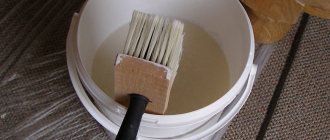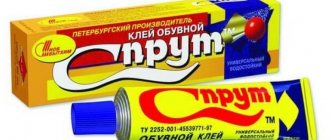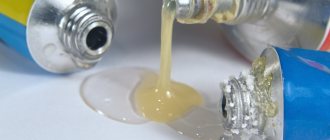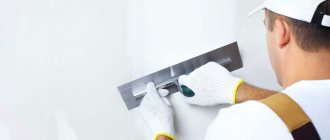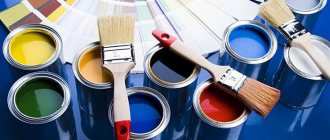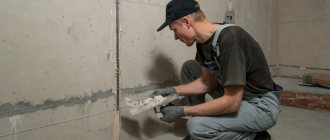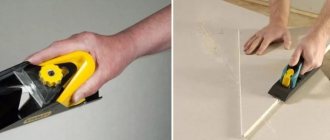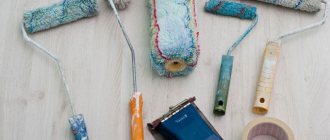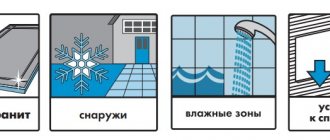Sometimes in the process of work or in everyday life you need to fasten metal parts together. It is not always convenient to solve the problem by welding or screw connection. Then an equally durable product comes into play - metal glue.
This special adhesive, available in different forms, will firmly and reliably connect metal to metal and to other materials (wood, plastic, leather, glass, aluminum, paper). You can glue even those surfaces that seem incompatible.
Types of adhesives
There are several types of means for gluing metal surfaces. The most effective and popular are:
- Epoxy adhesive. It contains fillers, curing accelerators, and resin. Such mixtures are produced in the form of a paste or liquid, in most cases two-component, that is, they consist of two components that are mixed before use. Epoxy adhesive is resistant to high temperatures, water and wear resistance. An example of such a composition is BF-2 or Moment epoxy adhesive.
- Cold welding joins the material by deforming the welding mass and introducing it deep into the surfaces being bonded, it can be made of one or two components, tightly adheres two substrates and is practically insensitive to the effects of very high temperatures. An example of cold welding is Poxipol glue.
- Double-sided tape is something that can easily be used to glue metal to metal; it is only important to choose the adhesive tape depending on the weight of the structure and the size of the areas being joined. Such a seam is practically insensitive to the effects of adverse environmental factors. At home, you can use double-sided tape Metal Shelf Tape, DublKote or Dublfix, which is effective even when gluing deformed and uneven surfaces.
Advice! Double-sided tape is ideal for connecting the surfaces of sheet material.
In rare cases, silicone glue sticks are used to join iron (usually black transparent, but the exact purpose of the hot-melt glue is indicated on the packaging), which are melted with a special gun, and with its help the material is distributed into the areas to be glued.
Textile glue Gutermann HT2
Volume : 30 g.
Price : 299 rub.
Gutermann HT2 adhesive is designed for working with natural materials, suitable for gluing cotton, linen, felt, and denim. Widely used in creativity, where it is necessary to glue various applications.
Freshly applied textile glue can be easily washed off with water, but only under one condition - while it is “fresh”. At the time of application, the glue is white, but subsequently loses color, becoming transparent. According to buyers, it is more profitable to buy glue on the Internet; there is a markup for it in stores. Glues the yarn tightly, just one drop is enough.
How to glue metal to metal
There are several types of glue that are most often used when gluing metal surfaces to each other:
Bonding metal to metal
- Epoxy adhesive. This type has the highest water resistance. Consists of two types of epoxy resins that are mixed with each other;
- Super glue Moment for metal “Moment Super Epoxy Metal” - applied in a thin layer, tightly glues metal surfaces;
- Cold welding, consisting of two tubes with substances for various purposes - one with an active adhesive agent, the other with a special substance for hardening;
- Double-sided tape - glues metal to metal and other surfaces.
Regardless of the type of glue used, the actions during preparation and directly gluing metal surfaces, you need to do the following:
- Clean and degrease the surfaces; if there is a need to get rid of traces of corrosion, pre-sand the surface;
- Study the instructions for the glue if available; if cold welding of two substances is used, it is necessary, without deviating from the recommendations of the instructions, to mix them;
- Apply a thin layer of glue to both surfaces so that when the surfaces are compressed, the remaining glue does not come out;
- Squeeze the surfaces with force and wait until the glue sets. The time, as a rule, indicated in the instructions for using the glue, ranges from 5 seconds to a minute. You can place something heavy on the surface if their dimensions allow this, or use special clamps or a vice;
- If there is a glue seam left that may interfere with further use, you can carefully sand it with sandpaper;
- For small products, you can use double-sided tape in cases where the surfaces will not be subject to intense mechanical use. To do this, glue a strip of tape onto one surface with the sticky side, then remove the protective film and place the second surface on the adhesive base that appears and press. In this case, there is no need to wait for it to harden; you can immediately start using the glued object.
We recommend: Desmokol glue: instructions for use
Sewline water-soluble glue stick
Volume : 7 g.
Price : 430 rub.
Sewline glue sticks were created using innovative technology, thanks to which the fabric can be washed and bent without fear that the glued seams will come apart. This glue easily joins layers of fabric intended for sewing, and after that it is also easy to wash off with water.
After drying, the glue leaves no traces. Thanks to the interesting idea, it is very convenient to use the glue - the rod extends. You can immediately purchase a package of replacement rods. Externally, the glue is almost indistinguishable from the pen, and only after you open the cap you will see blue glue.
Glue characteristics
Adhesive for joining metals has its own technical characteristics, which differ from one manufacturer to another. When choosing a specific adhesive composition, you need to pay attention to the following properties:
- drying time and conditions - as a rule, this depends on the place where gluing is performed and the specifics of the work itself;
- the maximum temperature at which the beneficial properties of the glue will be preserved - you should choose a composition that can withstand the conditions of use of the assembly or its future processing;
- method of application - some adhesives are recommended for spot treatment, others for complete coverage of the joints of parts;
- gluing technology;
- consistency - these can be tubes with the composition and hardener, as well as plastic sticks. The latter are convenient because you don’t need to knead: being anywhere, you cut off a piece, knead it and use it;
- materials with which gluing is possible - universality is a vague and unreliable concept here; it is better to choose a narrowly targeted adhesive to solve a specific problem. For example, for joining plastic and metal.
Scope of application
Metal adhesive is broadly applicable in many areas of life. Breakdowns often occur in industry and everyday life.
A child’s toy is broken – we are looking for an opportunity to fix it. It is necessary to repair a car, an exhaust pipe, repair any damage - there is also a need to reliably connect metal surfaces to each other. In the aviation, general construction and chemical industries, gluing metal parts is also widespread.
However, the compositions can differ in their narrow purpose and be universal. For example, professional heat-resistant adhesive is often used to repair plumbing, to repair cracks in metal, in the construction of fireplaces and stoves, when installing heated floors and for many other tasks.
Properties of heat-resistant base
If metal components are exposed to elevated temperatures during operation, their integrity will deteriorate over time and their service life will be shortened.
A heat-resistant composition of type “300” based on epoxy resin will be a worthy alternative to welding work.
Even high-temperature operation of the device will not damage the connections of the components. The lower limit of stability of the heat-resistant composition is 300 degrees Celsius. In addition, it is waterproof, thermally conductive and environmentally friendly.
Requirements for adhesives
A high-quality glue for metal after its use must fulfill several conditions:
- the most durable connection, which allows you to use parts without risk;
- preservation of properties over time;
- resistance to temperature changes;
- chemical neutrality, protection of the bonding site from corrosion;
- water resistance;
- minimal shrinkage after curing;
- no pungent odors;
- environmental friendliness.
Modern adhesives for bonding metal surfaces are divided into two main categories based on the extent of their application.
Two-component adhesives are compounds capable of joining parts made of different materials (wood, concrete, metal). They are widely used both in everyday life and in installation and repair work. Once set, this glue becomes quite plastic. However, this does not prevent him from holding the glued parts tightly.
One-component adhesives have a narrow application focus. This composition is recommended for use at temperatures not lower than +5 degrees Celsius. For industrial use, it is produced in aluminum tubes, which allow it to retain its beneficial properties longer.
There are also fast-hardening and, accordingly, slow-hardening adhesives.
The following adhesives for metals are considered effective:
- epoxy glue (“Moment”, BF-2) – it contains resin and fillers that accelerate curing;
- cold welding (Poxipol) - contains one or two components, deforms the welding mass, introducing it into the surfaces to be glued - this way it adheres them as tightly as possible;
- double-sided tape - adhesive tape on a polypropylene or foam base.
Before you begin gluing, you need to properly prepare the surfaces, remove signs of corrosion and traces of contamination from the parts. Do not use solvents or gasoline, so as not to leave an unnecessary layer of additives.
We recommend: Casein glue characteristics and application
Then you should thoroughly mix the cold welding components. Next, the finished mixture must be applied to the surfaces that need to be glued. The next step is to press the metal parts together or put them under a press.
Treating surfaces with a special primer, which will first degrease them and improve adhesion, will help improve the quality of gluing.
Adhesives for this type of gluing are compositions with increased mechanical strength. They are used when working with shelving, signs, furniture, display cases - with structures that are not subject to significant loads.
This type of gluing, on the contrary, is suitable for dynamic objects (elevators, machines, fans, cabins and bodies). For some static objects they can also be used if they are subject to thermal deformation.
Epoxy resin
Many compounds are based on epoxy resin. It has high adhesion to various materials, even metal, plastic and glass. Under the influence of hardeners, epoxy resin polymerizes and hardens. In this state, it is not dangerous for humans and animals. Epoxy resin that has not cured is a powerful poison that can cause serious harm.
When gluing metals with epoxy resin, you can obtain both an elastic deformation and a static rigid seam.
Bonding materials with different linear expansion coefficients
When heated or cooled, the adhesive joint of these materials experiences severe load deformation. It is recommended to glue them with a polyurethane mixture. There is no noticeable difference between strain bonding and joining materials with different expansion coefficients. The only difference is that in the first case, the adhesive seam must withstand high temperatures.
If metals are exposed to moisture for a long time, they oxidize and corrosion appears. Its occurrence is facilitated by the fact that the glue absorbs moisture that remains near the adhesive joint for a long time.
To avoid this, additional sealing of the adhesive joints is carried out, for example, with a layer of waterproof paint.
As for production, currently gluing products is a worthy alternative to welding and other types of joining metal parts. Some of their advantages, from a professional point of view:
- under deformation loads, they are superior to point contact in terms of structural reliability;
- adhesives significantly reduce or eliminate corrosion problems;
- By gluing together metal structures, we make them more resistant to vibrations and shocks;
- The technology of spot or planar gluing of metal parts saves production costs, making product manufacturing processes cheaper.
When gluing metal parts, you need to take into account the features of the future assembly, choose the right glue and carefully prepare the surfaces. This way you can glue even what cannot be welded.
Permanent adhesive for fabric PEBEO Setacolor
Volume : 45 ml.
Price : 1,020 rub.
Whatever you want to glue, PEBEO Setacolor will do it perfectly. It is suitable for fabric, cardboard, wood and other materials. The fabric can be washed 48 hours after the glue has been applied to the product. Optimal temperature: 40 degrees. The composition does not tolerate freezing.
PEBEO is a French company that also produces paints, thanks to which artists create incredibly beautiful paintings! The paints of this company do not fade or peel - one can judge its products by this fact alone. The glue is suitable for any type of fabric; it is recommended to apply it with a sponge, brush or pipette (whatever you have on hand).
The best brands
For domestic needs, compositions with an upper temperature limit above +120° C are rarely used, this is due to the characteristics of the product’s operation. Heat-resistant adhesives are used in the automotive and aviation industries, where special requirements are placed on gluing technology and the product itself.
Popular adhesives used at home are presented below.
Superglue “ Moment Super Epoxy Metal ”, which allows you to glue metal to various materials. The composition contains hardeners and epoxy resins. The product is resistant to low negative temperatures, oily substances, and solvents. Adhesive joints do not spread or decrease in volume during curing.
Maple-812 belongs to semi-professional and household products; it is a paste that can qualitatively combine ceramics, plastic and various metals. After final hardening, a very hard and at the same time fragile seam is formed; for this reason, the glue is recommended to be used only for products that will not be subject to change in shape during use. Primary hardening occurs at room temperature within 2 hours, final hardening occurs at a temperature of +80° C for one hour. Klen-812 should not come into contact with open fire. The product is packaged in 250 g containers, the price of one container is approximately 1,650 rubles.
VK-20 is polyurethane, and thanks to the catalysts it contains, it is resistant to short-term heating up to +1000° C. The adhesive is easy to use, the surfaces are joined within five days at room temperature. If it is necessary to speed up the process, you need to heat the product to +80° C. The glue has excellent adhesive properties, is waterproof, two-component (after combining the components, the product is suitable for use for seven hours).
We recommend: Spray adhesive in aerosol packaging - types and application of compositions
VS-10T is made from special resins, methenamine, quinoline and organic solvents. The formed seam can withstand heating up to +200° C for eight days, +300° C for a maximum of five hours.
How to use:
- Apply a layer of BC-10T to the surface and leave for 60 minutes to remove the solvent;
- connect the surfaces and place under a press (pressure should be 5 kgf/m2);
- place the product in a heating cabinet for 2 hours at a temperature of +180° C;
- remove and let the structure cool at room temperature.
The product can be fully used after 12 hours. VS-10T is sold in containers of 300 g, the price of one is approximately 1950 rubles.
K-300-61 is a special product, three-component, consisting of an amine hardener, filler and epoxy-silicon resin. Consumption is approximately 200-300 g/m2. It is difficult to find on sale; it is sold wholesale in 1.7 liter metal containers.
The main criterion when choosing a composition is its adhesive characteristics; the porosity and roughness of the parts, the area to be bonded, as well as the conditions in which the product will be used are also assessed.
Krylon spray adhesive
Volume : 400 ml.
Price : 995 rub.
Aerosol adhesive Krylon spray adhesive is ideal for artistic and decorative works. It does not contain acids, so you will not see any stains on the fabric. In addition to paper, glue is also used for gluing:
- parchment;
- paper;
- canvas;
- photos;
- decoupage, etc.
Before use, be sure to treat the product: it must be clean. The glue is applied from a distance of 20-40 cm in a smooth movement from left to right. Since the can is flammable, it should not be sprayed near a fire. It is advisable to ventilate the room when working. The glue is made in the USA.
Effective options
When visiting a hardware store to purchase glue for metal, your eyes literally run wide from the variety. In such a situation, it is difficult to choose the right product, which confuses most buyers. To avoid finding yourself in a similar situation, choose one of the most effective options presented below.
Epoxy
Adhesive mixtures made on the basis of resin and various fillers, among the advantages of which are:
- wear resistance;
- resistance to moisture;
- They can easily tolerate significant temperature changes.
Cold welding
The action of cold welding is based on the penetration of the adhesive mass into the material of the part, which, when solidified, creates an effect similar to a welding seam. Parts connected in this way are difficult to separate from each other, and the seam itself can withstand ultra-high temperatures.
Double-sided tape
A special tape coated with high-quality adhesive. It is used to connect both halves of metal parts and parts made of different materials. A structure fixed in this way is highly durable, and the joint successfully withstands external influences.
Anaerobic
A separate group of adhesives for metal, the work of which is based on the hardening of the adhesive only when access to oxygen is stopped. Such a connection becomes completely sealed, and its strength is not inferior to other types of adhesives.
Cyanoacrylate
Cyanoacrylate adhesive belongs to the category of universal products used for joining materials of various origins. Advantages of the mixture:
- strong seam;
- the mass hardens quickly;
- the seam remains stable over a long period of time.
Flaws:
- when the ambient temperature exceeds 100 °C, the strength of the connection is destroyed;
- not suitable for gluing parts between which there are large gaps.
UHU Alleskleber universal glue
Volume : 60 ml.
Price : 189 rub.
This adhesive is suitable for a variety of materials, be it porcelain, ceramics or fabric. The glue is made on the basis of synthetic resin, which came into use relatively recently - at the beginning of the last century.
The glue is water resistant, so the fabric can be washed. UHU Alleskleber can withstand temperatures up to +120 degrees, ideal for household work, as well as hobbies and modeling. Before work, do not forget to prepare the surfaces - they must be clean and dry. The glue is made in Germany, which inspires confidence among many.

